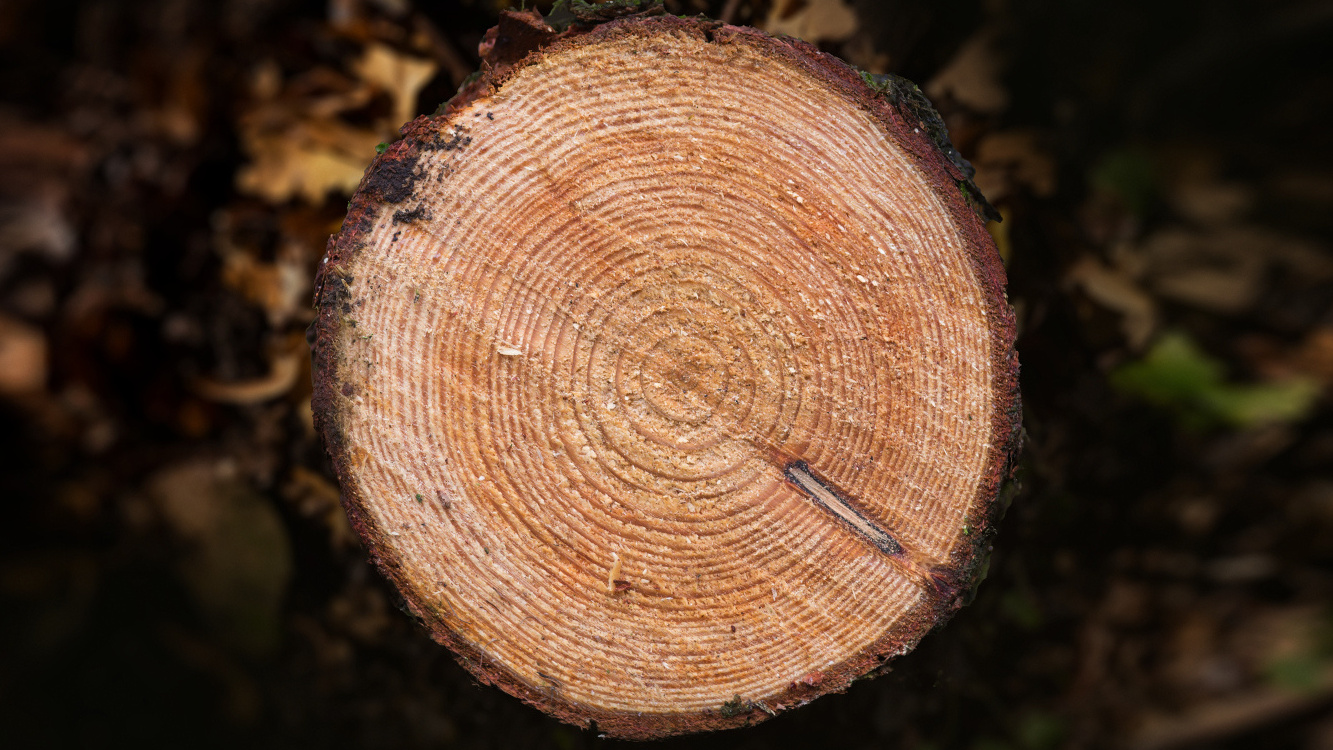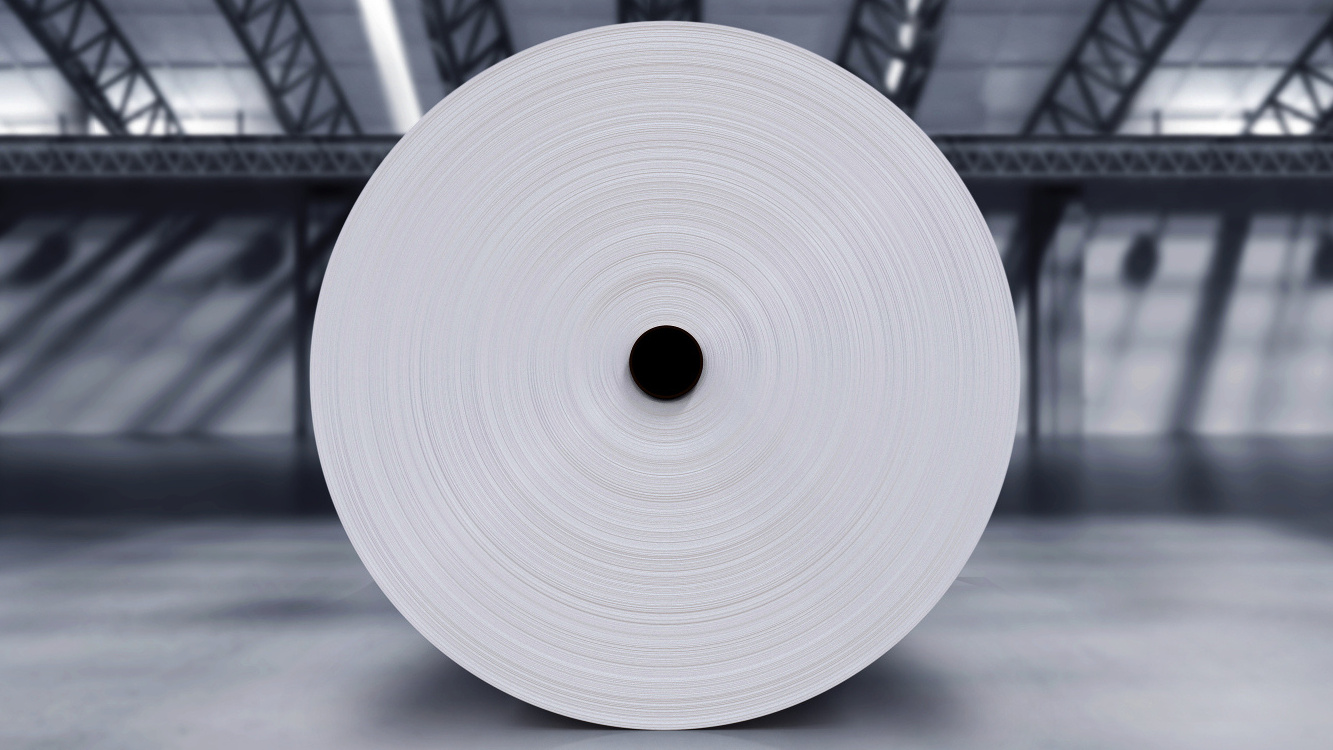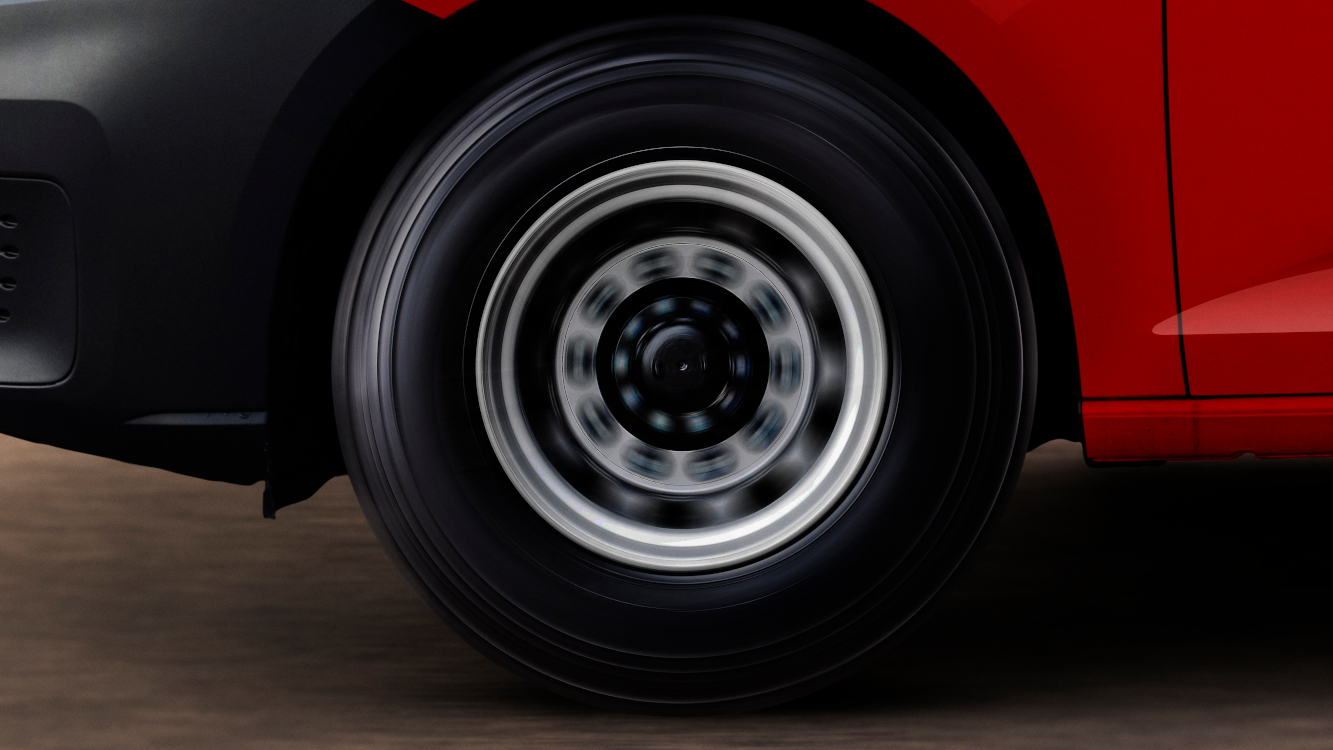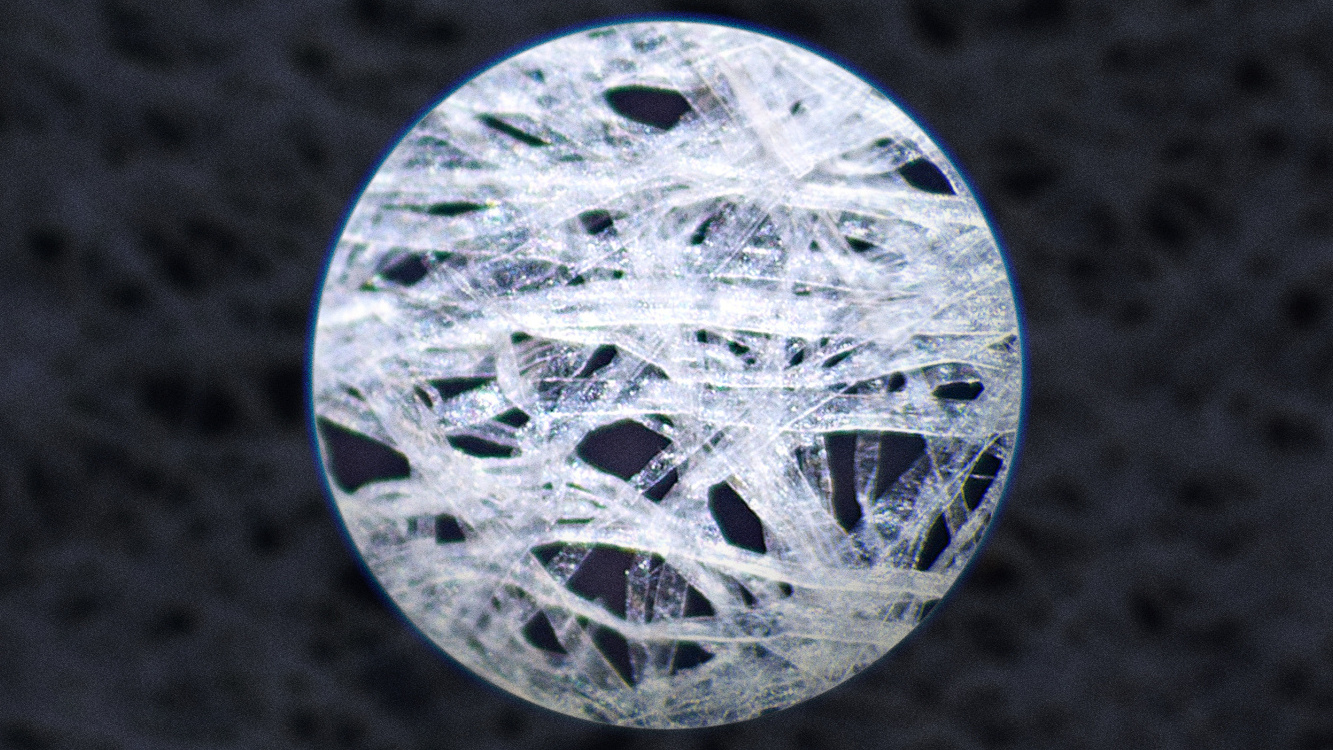
DISCOVER THE CIRCULAR ADVANTAGE OF MAIL
Mail can be a sustainable choice.
By understanding its entire life cycle, we can make better, more informed decisions that can significantly reduce our impact on the planet. By taking every opportunity to regenerate, reinvent, reduce, reuse and recycle, mail can contribute to a circular economy, and be part of an effective marketing mix.
Discover how mail can be sustainable. Watch our film 'The Circular Journey'.

The carbon Life Cycle Assessment of mail.
Opening the aperture on the carbon emissions for each stage of the mail process.
Research carried out by environmental experts, WSP and commissioned by Marketreach has produced a full carbon Life Cycle Assessment (LCA*) of Mail. It provides for the first time an in-depth look at the environmental impact and carbon emissions for each stage in the life of mail - from forest source to end-of-life, through the processing, design, production, delivery and recycling stages.
By opening the aperture and assessing the impact of mail across its entire life cycle, this new research reveals how the right decisions at the right time can make mail a more sustainable communication channel. There is still so much more to be done across the whole value-chain to decarbonise, detoxify, reduce waste and lower the carbon impact of mail. We are working together with the mail industry to achieve this, but the journey is well underway.
The journey begins with an appraisal of mail’s impact on the environment - as we can only improve what we can measure. Conducting a full LCA across the entire life cycle provides a benchmark and pathway to improvement.
The LCA analyses the environmental impacts of a mail format across its whole life. The objective of the study is to quantify the carbon emissions of some of the most commonly used mail formats. Every element matters from the sourcing of paper, inks, delivery and end of life. Through this comprehensive study we can help mail users make more informed choices to create more sustainable mail campaigns.
For more information about the sustainability of print channels including mail checkout out PrintGreen. This is a cross-industry partnership that empowers brands, agencies, and stakeholders to embrace print as a sustainable communications channel.
The 5 key stages of mail’s carbon life cycle
Materials: paper, envelopes & wraps
Creation: design & copywriting
Production: inks & printing
Delivery: processing, distribution & to user
End-of-life: recycling & landfill
Make your mail carbon smart with the LCA Tool
Compare formats across the life cycle of mail
Choose your format to check carbon emissions
| Product | Design | Materials | Printing | Ink | Delivery | End of Life | Total |
|---|---|---|---|---|---|---|---|
| Postcard | 0.75 | 5.98 | 9.11 | 1 | 24.77 | 2 | 43.61 |
| Occasion Card | 0.94 | 13.03 | 9.11 | 0.5 | 24.77 | 3.33 | 51.68 |
| DL outer and letter | 0.68 | 15.24 | 9.11 | 2.01 | 24.77 | 3.75 | 55.55 |
| C5 letter: Average | 0.83 | 22.31 | 9.11 | 2 | 24.77 | 4.98 | 63.99 |
| Leaflet: Average | 1.85 | 28.44 | 9.11 | 2.26 | 24.77 | 5.64 | 72.06 |
| A4 Letter | 0.6 | 35.58 | 9.11 | 8.03 | 24.77 | 8.25 | 86.34 |
| C5 catalogue: Average | 9.2 | 29 | 9.11 | 82.28 | 24.77 | 8.22 | 162.59 |
| A4 Letter (transactional pack) | 4.11 | 82.35 | 9.11 | 40.14 | 24.77 | 23.88 | 184.36 |
| Magazine: Average | 26.37 | 133.6 | 9.11 | 92.32 | 24.77 | 41.48 | 327.65 |
| A4 or C5 large catalogue | 29.82 | 190.79 | 9.11 | 128.44 | 24.77 | 62.36 | 445.29 |
A checklist for circular, sustainable mail.

Ensure paper is sourced from certified forests
Check the paper you’re using is certified. A well-managed forest, where trees are felled and replanted, absorbs more carbon dioxide (CO2) than a mature forest. In fact, forests represent a proven carbon capture and storage system [6].

Think about materials
Are the inks you’re using biodegradable? Biodegradable inks use natural vegetable oils, such as soy, sunseed or rapeseed oil. Is the amount of ink coverage appropriate? Consider reducing the density of ink used, and where possible use colours which use less heat and require less time to dry.

Consider size of formats
Weight, size, pagination and type of paper matters. Smaller, simpler formats involve less processing, packaging and reduce carbon footprint when it comes to delivery.

Design for many life cycles
Make decisions that maximise circularity such as the type of formats, materials and inks used. Encourage end users to change too – by making customers aware of the advantages of circularity. This can have a big impact on the circularity of mail.

Keep up to date with Royal Mail’s decarbonisation targets
Royal Mail is rapidly decarbonising its distribution fleet, switching to renewable energy and using more electric vehicles. Not forgetting last mile delivery by posties on foot. Find out more.

Make your business move faster on sustainability
We are all on a journey towards circularity. So we need to engage with our partners. It is not realistic to become 100% sustainable in a short time but if many become more sustainable, sometimes imperfectly, the impact will be huge.
For more tips on how to create more sustainable mail campaigns, download our guide.
Ready to read more?
Life Cycle Assessment
Using Mail More Sustainably Guide
FAQs
Not all mail is created equal.
There is good and bad.
But mail can be a sustainable choice. If you make the right, informed decisions.
Done in the right way using the right materials, mail can be part of a circular, regenerative economy - as well as part of an effective marketing mix.
By opening the aperture and assessing the impact of mail across its entire life cycle, from raw material to end-of-life, new research reveals how the right decisions at the right time can make mail a more sustainable form of communication. There is much, much more to be done to decarbonise, reduce waste and lower the impact of mail - but the journey is well underway.
The term ‘carbon’ is commonly used in replacement for ‘Greenhouse Gases’ (GHGs). It reflects all GHGs and is presented in terms of a unit weight of CO₂ equivalent e.g. gCO₂e.
Marketreach’s Life Cycle Assessment has looked in depth at the environmental impact and carbon emissions from every stage of the production and disposal of mail:
- Sourcing / Raw Materials:
- from the forests that provide the raw materials for paper and pulp.
- Processing:
- in the mills that turn that raw material into paper.
- Printing & creation:
- the design time, the inks and the printing processes involved in creating mail.
- Delivery:
- transport & delivery operations and last-mile posties.
- End of Life:
- disposal (both landfill and recycled) of paper and envelopes.
Each stage reveals both the progress achieved so far to make more sustainable options available - and the work that needs to be done to lower emissions still further.
Carbon hotspots represent the highest carbon emitting source(s) and show where quick wins in carbon reductions are possible.
The LCA results show carbon hotspots exist in material and ink use as well as delivery, so these phases offer the maximum opportunity for carbon reduction.
A. Inks
Both quantity and type of ink impact on carbon emissions and are key considerations for reducing carbon emissions. You should aim to get the most out of the materials and format you’re planning to use – with as little waste as possible.
As the products increase in size (dimensions), including number of pages and sides, the quantity of ink increases and therefore the associated emissions. For example, with an A4 letter (transactional pack), average magazine and A4 or C5 large catalogue, after materials, ink is the second largest life cycle stage contributor to total carbon emissions.
What to check for:
- Is the amount of ink coverage appropriate?
- Design where possible with less ink coverage, saving ink during printing.
- Is the overall weight and size as economical as it can be without reducing the impact of your campaign?
Also see if the following inks are available:
- Soy-based Inks are made from soybeans and are available across a spectrum of colours. Another advantage is it’s easier to recycle the paper it’s printed on.
- Eco-solvent Inks are non-water based and made from the ether extracts of refined mineral oils. Printers often describe them as ‘soft’ or ‘mid’ inks.
B. Materials:
For the products with an average weight of greater than 25g, the emissions from the paper were a more significant part (>50%) of the total raw material emissions. In particular, the envelope emissions for the A4 or C5 large catalogue and an average magazine were 13% and 11% of the total raw material emissions respectively.
- Paper wrap, for A4 or C5 large catalogues, is 100% recyclable and less harmful to our planet than plastic polywrap.
- Products mailed without polywrap, or envelope are known as naked mailings. There are cost savings and postal discounts from using this method.
C. Delivery
Delivery to the Royal Mail distribution centres is a carbon hotspot, accounting for 53% of total delivery emissions. As the UK and Royal Mail progresses towards Net Zero, emissions from delivery are also likely to reduce. Royal Mail have plans to reduce the emissions relating to letters and parcels via their Net Zero 2040 strategy ‘Steps to Zero’ [8]. This focuses on the electrification of final miles, optimisation of local and national distribution, moving from planes to trains and delivering efficient and renewable energy for operations.
Learn more [9]
Once you’ve done everything you can to reduce the impact of your mailing, you may want to consider offsetting the delivery using Royal Mail’s tool.
Understandably less ink, less paper, improved recycling rates, more efficient van loading, less delivery by plane, renewable power sources and less waste… saves money.
Furthermore, the investment Royal Mail is making today to become more efficient saves money in the long term.
For your business, circular, sustainable mail can help you create more effective comms for customers, adhere to ESG standards, develop your brand reputation, create a competitive advantage, reduce your scope 3 emissions, and be a catalyst for innovation.
Furthermore, we urge all businesses to set science-based targets [10] to decarbonise their operations to gain the greatest benefit for their employees, planet, and the future.
All media has a carbon footprint.
However, many believe that digital media’s carbon footprint is negligible as it is seemingly invisible. We do not think about the mining of minerals, water usage and power demands on the infrastructure of our digital world.
Various studies estimate the world’s digital footprint to be between 2.3 – 3.7 percent of global CO₂ emissions, which is equivalent to the emissions of the entire aviation industry [11].
By comparison, the pulp and paper industry accounts for 2% of global CO₂ emissions [12].
In Europe the industry only accounts for 0.8% of European greenhouse gases and it is the biggest single user and producer of renewable energy in the EU [13].
Research carried out by WSP and commissioned by Marketreach has produced a full Life Cycle Assessment (LCA*) of Mail. For the first time, it has looked in depth at the environmental impact and carbon emissions from each stage in the life of mail - from forest source to end-of-life, via the processing, design, production and delivery stages. By assessing the impact of mail across its entire life cycle, this new research reveals how the right decisions at the right time can make mail a more sustainable form of communication.
In Europe, where almost all primary forests are protected, paper comes from sustainably managed forests where the cycle of planting, growing and logging is carefully controlled.
As a result, between 2005 and 2020, European forests grew by 58,390 square kilometres – that’s an area bigger than Switzerland and amounts to over 1,500 football pitches every day [14].
Paper boasts exceptional environmental credentials: it’s natural, biodegradable, recyclable, comes from an infinitely renewable source and is produced in a sustainable manner.
A well-managed forest, where trees are felled and replanted, absorbs carbon dioxide (CO2). In fact, forests represent a proven “carbon capture and storage” system. Carbon storage is further prolonged by recycling paper [15].
Energy:
A pulp mill with a modern recovery boiler, such as Świecie in Poland, can generate up to 100 kilowatt hours of excess electricity per tonne of pulp. This excess can be fed into the power grid, allowing it to participate in the electricity balancing market. This market helps stabilise the power grid across Europe by balancing out fluctuations in demand and generation [16].
Water:
While pulp and paper manufacturing require a lot of water, 93% of the water used in the European paper industry is returned in good quality (having been reused within the mill before being suitably treated), with the remainder either evaporated, staying within the product, or bound up in solid waste [17].
Bleaching:
According to Storaenso:
Mills mainly use ECF bleaching. This technology was taken into use to replace chlorine with chlorine dioxide in the first stage of bleaching, and it virtually eliminates the formation of toxic compounds like dioxins and furans.
ECF bleaching, in combination with oxygen delignification, provides - with lower energy consumption - higher yield and produces stronger fibres compared to TCF bleaching. This, in turn, enhances the ability to recycle the products made from the pulp and contributes to more efficient use of wood resources.
Modern ECF pulp mills use bio-activated sludge in wastewater treatment, so the water released back to the watercourses is virtually free of toxic substances.
The most environmentally safe technology available to pulp mills is Total Chlorine Free (TCF), which uses no chlorine compounds. Instead, the bleaching process is supplemented with oxygen, ozone and/or hydrogen peroxide [18].
According to Inside Packaging:
Conventional ink uses mineral-based oils with pigments containing metals. When packaging such as card or paper biodegrades, the oils and pigments used in the printing process do not biodegrade and so contribute towards environmental pollution. However, different types of inks have been developed over the years and are used by different companies to make products more eco-friendly and biodegradable, while still maintaining the correct colour and longevity.
Biodegradable inks use natural vegetable oils, such as soya, sunseed or rapeseed oil. These types of inks produce vivid colours and are generally more cost-effective than traditional inks. This is because the ink flow spreads more efficiently and, therefore, means less ink is used when printing [19].
Our partners in the printing industry, like Webmart, are measuring the impact of their operations. Carbon figures are put against different types of ink, press size, plates, paper as well as the distribution of mail [20].
We advise all suppliers across our industry and beyond to consider science-based targets to reduce their emissions wherever possible [10].
Just like every other sector and industry, in the face of an environmental and climate emergency, mail needs to continue to transition to be part of a low-carbon, nature positive and truly sustainable economy. Business as usual is no longer feasible on a finite and warming planet with rising energy and commodity costs. The days of ‘take-make-waste’ are over and we must all take a more circular approach.
As both leader and champion of the mail channel, Marketreach and Royal Mail have a significant responsibility to demonstrate leadership and ambition in this area - to lead the industry, accelerate change and ensure that mail is contributing to a more circular and sustainable economy.
When done in an informed and sustainable way, mail can deliver an environmental advantage - for climate, for nature, for a thriving bioeconomy, minimising its impact on the planet, and maximising the (re)use of finite resources.
And in doing so, it can also potentially create a commercial advantage for brands and businesses - circular, sustainable mail can help them create more effective comms for customers, adhere to ESG standards, develop their brand reputation, create a competitive advantage, reduce their scope 3 emissions, and be a catalyst for innovation.
According to Accenture:
Product Life Extension allows companies to extend the life cycle of products and assets. Values that would otherwise be lost through wasted materials are instead maintained or even improved by repairing, upgrading, remanufacturing or remarketing products. And additional revenue is generated thanks to extended usage. Using this model, a company can help ensure that products stay economically useful for as long as possible and that product upgrades are done in a more targeted way (for instance, an outdated component is replaced instead of the entire product) [21].
Continued dependence on scarce natural resources for growth exposes a company’s tangible and intangible value to serious risks.
Supply uncertainties and changing consumer preferences could prevent companies from generating revenues and maintaining market share.
Companies whose growth is tightly tied to scarce resources will find themselves at a competitive disadvantage due to rising and volatile prices that reduce their ability to forecast and compete with less resource-intensive competitors.
A company’s environmental footprint and resource dependence could erode brand value as consumers shun companies with unsustainable business practices. And, as planetary bottlenecks and resource scarcity become more critical, policymakers likely will favour companies that can prove they have positive societal impact and can operate without depleting the country’s natural resources [21].
Innovation and product development are different in a circular economy, as focus shifts from designing for single use to designing for many life cycles and users while optimising the environmental effects of the materials used.
Adapting products to generate revenues not only at point of sale but also during use (e.g., maintain, upgrade, and share) as well as low-cost return chain and reprocessing (e.g., modularity, traceability, and standardisation) are key design challenges.
We are all on a journey towards circularity. We all need to engage with our partners - for us that’s printers, advertising agencies, media buyers, energy providers, ink suppliers, and the paper industry, to name a few. It is not realistic to become 100% sustainable in a short time but if many become more sustainable, sometimes imperfectly, the impact will be huge.
Marketreach is here to act as a guide.
In assessing mail businesses can start by asking questions like:
- Can the mailing be designed to reduce waste and enable the product to be recycled?
- Can the amount of excess paper trimmed off be reduced?
- Is the amount of ink coverage appropriate?
- Would less dense inks be suitable, saving more energy during printing?
The LCA (Life Cycle Assessment) provides - for the first time - accurate data on the carbon impact of every activity in the life cycle of mail, and means you can make better, more informed decisions to create more effective and sustainable mail campaigns.
The study assesses the most common commercial letter products (mail out) delivered by Royal Mail in the UK and with the greatest spectrum of data to highlight key differences in carbon impact.
Read it here.
Also see our LCA tool on the website and the Using Mail More Sustainably Guide [22].
The most common formats were used and a good spectrum in diversity of format to provide the most useful analysis to our customers.
- Two variations of the C5 letter were assessed, a A4 2pp and a A5 4pp
- Two variations of the magazine were assessed, a 64pp and a 28pp magazine
- Four types of leaflet were assessed, an A4 2pp and A4 4pp and an A5 2pp and A5 4pp
- Four types of C5 catalogue were assessed, a 12pp, 16pp, 24pp and a 32pp catalogue
The formats used provide key recommendations on the opportunities to improve data granularity and therefore results on the nuances of different products. In addition, the results show carbon hotspots exist in material and ink use as well as delivery, so these phases offer the maximum opportunity for carbon reduction.
In FY2021-22, Royal Mail launched a new ‘Steps to Zero’ environment strategy that brings forward its Net Zero ambition to 2040. Royal Mail has the UK’s largest electric fleet of any major UK parcel operator, with around 3,800 electric vans in service today and around 5,500 expected by spring 2023.
In addition, its 90,000 posties walk over a billion steps each day, delivering to over 31 million addresses. Furthermore, Royal Mail has committed to purchasing or generating 100% renewable electricity across its business from 2022 [9].
According to Plan A:
- Scope 1: all direct greenhouse gas emissions from using fossil fuels. Such as: petrol and diesel used in plant, equipment and machinery, for industrial processes, transport and combustion for electricity generation (e.g. generators).
- Scope 2: indirect greenhouse gas emissions from consumption of purchased electricity, heat or steam.
- Scope 3: other indirect greenhouse gas emissions neither owned nor or directly controlled by the reporting company and that occur in its value chain.
A more detailed look at scope 1, 2 and 3 emissions:
- Carbon emissions are responsible for 81% of overall GHG emissions. The rest of GHG emissions are: methane (10%), nitrous oxide (7%) and fluorinated gases (3%). Businesses must monitor and report their CO2 emissions, which is the key first step in reducing them. To do so, companies must classify their carbon footprint in three scopes.
- According to the leading GHG Protocol corporate standard, a company's greenhouse gas emissions are classified into three scopes. Scope 1 and 2 are mandatory to report, whereas scope 3 is voluntary and the hardest to monitor. However, companies succeeding in reporting all three scopes will have a better understanding of their impacts and may gain a sustainable competitive advantage.
Scope 1
- Scope 1 emissions are direct emissions from company-owned and controlled resources. In other words, emissions are released into the atmosphere as a direct result of a set of activities, at a firm level. It is divided into four categories: stationary combustion (e.g., fuels, heating sources). All fuels that produce GHG emissions must be included in scope 1.
- Then, mobile combustion is all vehicles owned or controlled by a firm, burning fuel (e.g., cars, vans, trucks).
- Fugitive emissions are leaks from greenhouse gases (e.g., refrigeration, air conditioning units). It is important to note that refrigerant gases are a thousand times more dangerous than CO2 emissions. Companies are encouraged to report these emissions.
- Process emissions are released during industrial processes, and on-site manufacturing (e.g., production of CO2 during cement manufacturing, factory fumes, chemicals).
Scope 2
- Scope 2 emissions are indirect emissions from the generation of purchased energy, from a utility provider. In other words, all GHG emissions released in the atmosphere, from the consumption of purchased electricity, steam, heat and cooling.
Scope 3
- Scope 3 emissions are all indirect emissions - not included in scope 2 - that occur in the value chain of the reporting company, including both upstream and downstream emissions. In other words, emissions are linked to the company's operations.
Circularity relies on many different processes, for example, regeneration, reuse, reinvention, and recycling. These processes can eliminate waste and pollutants, reduce the impact of operations, improve efficiencies, circulate products at their highest value and regenerate nature.
Regeneration:
In nature it is the process of renewal and restoration.
Regenerative production provides food and materials in ways that support positive outcomes for nature, which include but are not limited to healthy and stable soils, improved local biodiversity, improved air and water quality.
The production of paper for example feeds a regenerative economy in which more trees can be planted replacing those cut down. In this process, green jobs are created, carbon can be sequestered, soil health can improve, and watersheds can be secured.
Reduce:
A process to minimise the impact and inputs of operations.
For mail, carbon emissions can be reduced by using renewable, clean energy to power deliveries or reducing the amounts of ink and paper in production.
Reinvention:
Using the principles of circularity to change the materials used and the processes in creating the end-product. For example, reinventing inks with the introduction of algae or soy, or reinventing power systems to be renewable and clean.
Reuse:
The repeated use of a product or component for its intended purpose, avoiding landfill and eliminating waste. For mail, this can refer to the re-use of many products that assist in the mail process, such as ink cartridges, trays, mail bags and elastic bands.
Refurbish:
Return a product to good working order. This can include repairing or replacing components, updating specifications, and improving cosmetic appearance.
Re-engineer:
Re-engineer products and components to as-new condition with the same, or improved, level of performance as a newly manufactured one.
Repair:
Operation by which a faulty or broken product or component is returned back to a usable state to fulfil its intended use.
Recycle:
The transformation of a product or component into its basic materials or substances and the reprocessing of them into new materials. In mail terms, this relates to the recycling of paper fibres, which can be recycled many times within the paper that forms mail packs, until the point that they are no longer strong enough to provide the quality needed. However, at this point fibres may still be used within other products which don’t require high quality fibres such as cardboard or egg cartons.
To learn more about circularity, click here [24]





